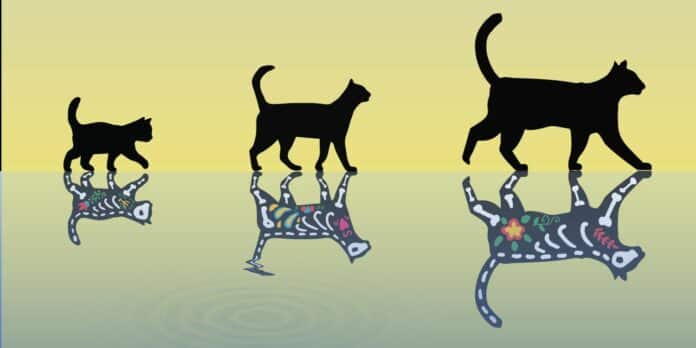The idea of Schrodinger’s cat being alive and dead at the same time—its fate revealed only upon inspection—came from a thought experiment that pointed out an absurdity in the interpretation of quantum mechanics at the time. However, because such superposition states have now been prepared in many different quantum systems, the question is, where do the classical and quantum worlds part company?
By placing a tiny crystal in a superposition of two oscillation modes, ETH researchers under the direction of Yiwen Chu, professor at the Laboratory for Solid State Physics, have now produced a Schrödinger cat that is significantly heavier. Their results could lead to more robust quantum bits and help to explain why quantum superpositions are not observed in everyday life.
Scientists created a so-called cat state using an oscillating crystal, which represents the cat, with a superconducting circuit representing the original atom. The circuit in question is essentially a quantum bit or qubit that is capable of taking the logical states “0” or “1” or a superposition of the two states, “0+1”.

Instead of a Geiger counter and poison, the link between the qubit and the crystal “cat” is a layer of piezoelectric material that generates an electric field as the crystal oscillates. The qubit’s superposition state can be communicated to the crystal by coupling that electric field to the qubit’s electric field.
Chu said, “As a result, the crystal can now oscillate in two directions at the same time – up/down and down/up, for instance. Those two directions represent the “alive” or “dead” states of the cat.”
“By putting the two oscillation states of the crystal in a superposition, we have effectively created a Schrödinger cat weighing 16 micrograms. That is roughly the mass of a fine grain of sand and nowhere near that of a cat, but still several billion times heavier than an atom or molecule, making it the fattest quantum cat to date.”
The oscillation states must be macroscopically distinct to qualify as genuine cat states. This implies that any thermal or quantum fluctuations in the atoms’ locations within the crystal should be smaller than the spacing between the “up” and “down” states.
Scientists verified this by utilizing the superconducting qubit to measure the spatial separation between the two states. The states could be distinguished clearly even though the measured spacing was only a billionth of a meter, which is less than an atom.
Chu said, “This is interesting because it will allow us to understand better the reason behind the disappearance of quantum effects in the macroscopic world of real cats. Beyond this rather academic interest, there are also potential applications in quantum technologies. For instance, quantum information stored in qubits could be more robust by using cat states made up of a huge number of atoms in a crystal rather than relying on single atoms or ions, as is currently done.”
“Also, the extreme sensitivity of massive objects in superposition states to external noise could be exploited for precise measurements of tiny disturbances such as gravitational waves or for detecting dark matter.”
Journal Reference:
- Marius Bild, Matteo Fadel, Yu Yang, Uwe von Lüpke, Phillip Martin, Alessandro Bruno, and Yiwen Chu: Schrödinger cat states of a 16-microgram mechanical oscillator. Science 2023, DOI: 10.1126/science.adf7553
